Standing on the 18th tee, I'm sensing a little deja vu ... all over again.
It doesn't matter where I'm at or which course I'm playing, the look and feel of the final hole has a Groundhog Day sense of sameness.
The story goes like this: I'm playing well, having fun, enjoying the game. Then the architect does his best wet blanket routine, dropping a cold dose of reality in the form of a gut-busting 440-yard par 4 or some ball-gobbling, hazard-strewn par 5. There goes my good round. I walk off the 18th green feeling deflated instead of triumphantly strutting into the 19th hole. Why is finishing with birdie such a sin?
If architecture is art, then how come so many golf course architects refuse to color outside the lines? I've seen too many cookie-cutter closers out there. Make it hard. Make it long. Rinse. Repeat. Nobody wants to end their round like Jean van de Velde at Carnoustie standing ankle deep in water, contemplating how not to make triple.
Isn't it time to spark a movement that makes this game more sustainable, more fun, more interesting? Courses celebrating their daunting finishing hole with names like "Terminator"or "Dyeabolical" should take a back seat.
Tom Doak says he takes a different approach than most architects regarding finishing holes. He doesn't believe in saving "the best for last" or that the hole is any more "important" than the others.
"Too much of American design is based on cliches and 'rules' about what the customer supposedly wants," he shared in an email. "Luckily, a lot of my clients have not put much stock in those cliches, and were more open-minded about what a good finisher can be."
The search for the perfect closer
Recently, I I analyzed the scorecards of nearly 1,000 top courses I've played. A pattern quickly emerged. I'd estimate 90 percent of the finishing holes were either par 4s ranging from 420 to 470 yards or par 5s ranging from 520 to 600 yards. Roughly 60 finished on a hole 370 yards or less. For a reference point, I collected yardages of the 27 finishing holes you can play on the PGA Tour. Nine are par 5s, averaging 577 yards each, and 17 are par 4s, averaging 450 yards a pop. (The Greenbrier's TPC Old White was the only one ending on a par 3). All yardages are from the tips.
I completely understand why par 5s work so well on Tour. They're good for big swings on the leaderboard and offer up risk-reward scenarios. Every year the AT&T Pebble Beach Pro-Am comes down to the guys challenging Stillwater Cove to go for the 543-yard 18th at Pebble Beach in two.
The problem is the risk-reward becomes irrelevant during everyday play when 90 percent of golfers can't reach the green. It just never plays out like the architect envisions for us Average Joes.
It's the bludgeoning par 4s I despise most. For elite-level tournament tracks like Bay Hill (458 yards), Doral's Blue Monster (473) and Corales (501), they make sense. But why such brutal tests to wrap up the resort/daily-fee types of courses: Saratoga National (473), The Brute at Grand Geneva (464) or Kiva Dunes (458)? Classics like Broadmoor East (433) are just as guilty as the modern designs like Bears Best Las Vegas (463) as crazy-hard finishers. Only rare instances break from the norm.
Bethpage Black on New York's Long Island and The Olympic Club in San Francisco provide proof that not all U.S. Opens have to end in bogey (or worse) fests. Despite its torture-chamber reputation, the Black's 411-yard finishing hole ranks as only the 15 handicap. The closer on the Olympic Club's Lake course is merely 347 yards, albeit uphill.
The most obvious and controversial anomaly to end a round is the par 3. I've covered this issue in the past. The majority of comments in the story below show contempt for the concept, even though Pasatiempo by Dr. Alister MacKenzie is considered one of the all-time greats. I'm fine with ending on a par 3 ... as long as it's compelling.
Pastiempo's finisher looks simple enough until you land in an unplayable spot. Little did I know during a recent round that General Manager Scott Hoyt was watching after I missed the green long. He knew I was dead and couldn't look away from the pending train wreck. I attempted a flop shot from the back left rough over a bunker's edge to a back-right hole location with no way to stop the ball near the hole. Exasperated, after my shot rolled 35 feet away, I three-putted for five.
Ultimately, what should make a good closing hole, regardless of yardage, is what makes any hole great: risk-reward, playing options, intrigue, setting. Unfortunately, too often those characteristics take a back seat to distance and difficulty.
"Fun and interesting options for the hole are the most important (thing)," wrote Michigan-based Architect Mike DeVries in an email. "That can be challenging, too, but that shouldn't be the primary focus."
That thinking is why I prefer the drivable/short-to-medium par 4, the rarest of all closers. Anybody can make birdie - no matter their handicap - and bogey is still in play for a dramatic swing in the tournament or a match.
Thankfully, there are enough noteworthy examples overseas that maybe someday the notion could gain more traction. Classic links are known to be lovably quirky. Both the Old Course at St. Andrews and North Berwick in Scotland finish on short 4s in the heart of town. St. Andrews' 361-yarder rolls over the Swilcan Burn and its famous Swilcan Bridge into the Valley of Sin, a depression short of the 18th green.



I remember more fear than excitement on the 277-yard final hole at North Berwick. Right of the fairway were dozens of parked cars. I bailed out left rather than shatter a windshield. A meager effort. Unfortunately, Machrihanish Golf Club's closer, "Lossit", ends on 314 yards of flat ground that feels like a letdown after four hours of dancing with the dunes. Driving the green is also feasible on the 288-yard closer named "Clock" at Prestwick, the original home of The Open. Add Scotland's Gullane No. 1 (355 yards) and Northern Ireland's Ardglass (345) among the overseas courses that end with more friendly finishers (downhill, even!).
One of my favorite golf course finds of all time is the Olympic course at Gold Mountain in Washington state. This muni goes out with a bang, a 325-yard thriller where double is more likely than birdie. Funny thing is, the course wasn't designed this way. It only happened after the United States Golf Association flipped the nines for the 2011 U.S. Junior Amateur. The winner? Some kid named Jordan Spieth. The new routing stuck.
Another memorable one is the 18th at the Durban Country Club in South Africa even though it is rated the easiest hole on the course, stretching to merely 253 meters (roughly 273 yards). It's not impossible to dream of landing an ace with a good drive up the left side that bounces back toward the flag. All this in the shadow of the imposing Moses Mabhida Stadium and cityscape.

Other top U.S. tracks ending on shorter par 4s include Wolf Creek in Mesquite, Nev. (307 yards); Pilgrim's Run in Pierson, Mich. (358); the Omni Bedford Springs in Bedford, Pa. (356); and Coyote Moon in Truckee, Calif. (341). More of these would be great for the game.
"I've always thought that the finishing hole should have some of the same principles of that last scene in a film," Arizona-based Architect Forrest Richardson wrote by email. "It needs to summarize, reinforce the concept and leave the players with a sense of wanting a bit more, perhaps wonder what happens next.
"Of course, in golf, what happens next is a matter of returning and playing again. That is truly what makes a golf course great, so I suppose the last hole is that one last attempt to gain a repeat player."
Ways to make memorable finishers
There are tricks architects use besides yardages and doglegs to make the finishing hole a proper finale to the round. Too often, unfortunately, the location of the clubhouse handcuffs their options.
The easiest way is to save the best land for last. Often times that means routing the hole along the shoreline of a lake or an ocean. There's so many strong examples beyond Pebble Beach: Bigwin Island (the article's lead photo) in Ontario, Canada; Leatherstocking in Cooperstown, N.Y.; Great Waters at Reynolds Lake Oconee; TPC Harding Park in San Francisco; Abaco Club in the Bahamas; Stonewall Golf Club on Lake Manassas, Va.; etc. DeVries remains most proud of no. 18 at Cape Wickham Links along Victoria Cove on King Island off the coast of Australia. "It is an epic hole, probably one of the best finishers in the world," he gushed. (VIDEO: See Cape Wickham and its remarkable 18th hole)
Heroic do-or-die shots over water are another choice. They end the day with an adrenaline rush or utter despair. One of my favorite all-time golf quotes came from 2005 Michigan Amateur champ Christian Vozza talking about the 18th hole at The Heather at Boyne Highlands. "It feels like the water is over your head," he said of the daunting 176-yard carry over a pond from the end of the fairway to the green.

The Links at Greystone in Walworth, N.Y., also sports a huge pond at No. 18 with absolutely no bailout. You either carry it or lay up for a 110-yard wedge to freedom. Doral's Golden Palm course and Le Golf National's Albatros course in France, host of the 2018 Ryder Cup, end at island greens.
Elevated tees with views for miles definitely leave a lasting impression. In Michigan's rugged Upper Peninsula, TimberStone's final par 5 races down a ski hill to a tiered fairway. The elevated final tee at Greywalls, a DeVries design in nearby Marquette, looks out to Lake Superior, while delivering a friendly path home, a 533-yard par 5 with no bunkers. Glen Ivy's final tee drops 200 feet to the fairway in southern California, quite possibly the largest elevation change in U.S. golf. You can find three other demon drops off of 18th tees in this story, including Kapalua's famed Plantation course on Maui.
Sometimes, unconventional works, too. At the Links at Las Palomas in Mexico, Richardson was designing a par 5 up and over a dune when he discovered a site for a second green. The lower green is down in a cauldron as a semi-blind shot. The upper green to the right hugs the native dunes and brush. When the lower green is not in use, there are extra tees that create a bonus 19th hole. “It happened one day when I was working on the routing and it just stuck,” Richardson recalled.
There is one tactic I'm not a fan of: Bingeing on bunkers. The setting of La Cana Golf & Beach Club's 18th hole (the ninth of the Arrecife nine) is gorgeous right along the Caribbean Sea in the Dominican Republic. So is Trump International Golf Links Scotland's spectacular elevated tee overlooking the North Sea. Why toss in 18 bunkers on Trump Aberdeen and 13 (plus a large waste area) on La Cana? It's overkill and takes away from the enjoyment of the moment. King's North at Myrtle Beach National sets the standard for an obscene amount of bunkers (40!) on its par-4 18th. Compare Trump's bunker infestation, pictured below, to the natural look of the bunkerless 18th at Greywalls.
The handicap rating of No. 18 must also be taken into account. If it's rated among the three hardest holes on the course, it will likely require the better player to give up a stroke at the most inopportune time. That's not an ideal way to settle a hard-fought grudge match that's come to the final hole.
DeVries offers up this philosophy on the matter: “I have always thought that a really difficult par 4 should be somewhere in the hole 14-15 range, giving the golfer a chance to make up a hole, lose one, or have a good halve, but then still have a few holes left to overcome your opponent if you failed."
If you absolutely must bash me over the head with the no. 1 handicap as the finisher, make sure you wow me, too. That's what happens on The Hills in New Zealand. I've shared this photo of its artwork before, the 100 wolves attacking a swordsman. It's overwhelming to walk among the bigger-than-life statues.
Since most course owners don't have hundreds of thousands of dollars to spend on such a decorative display, I recommend building a finisher that players love, not loathe. Doak shared a story of building Sebonack, a private club on Long Island.
“Our client Michael Pascucci urged Jack Nicklaus and I to change the 18th hole from a long 4 to a par 5, so that members wouldn’t be griping about double bogey to conclude their round,” he recalled. “I do think that’s an important factor. My very first design (High Pointe) was a par 5 with water in play for the only time in the round, and it left a bad taste in a lot of golfers’ mouths. A simple hole like the finishing hole at North Berwick, where the average guy can try to drive the green, can be memorable or indeed thrilling, completely independent of its setting and view.”
That's all we ask. Just give us a chance. Birdie or bust is better than bogey or worse.
What's your philosophy on closing holes? Is harder and longer okay or should there be change moving forward? Let us know in the comments below.








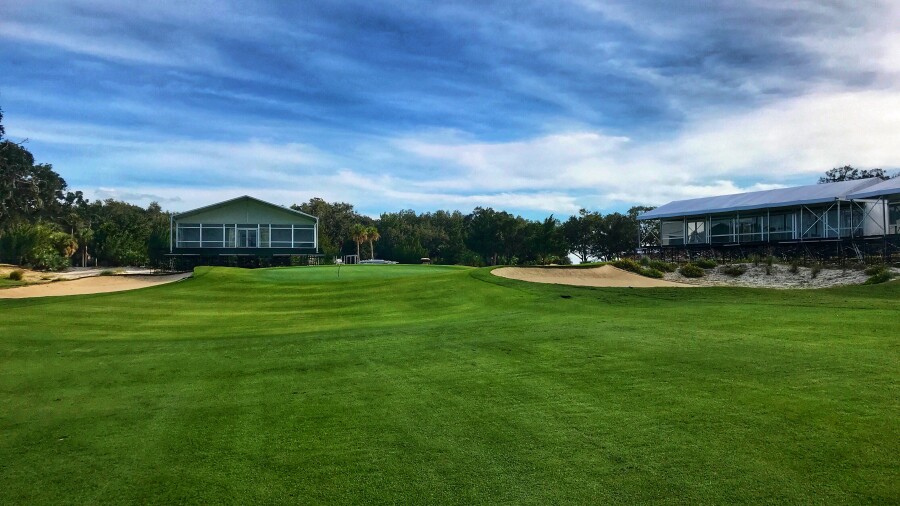





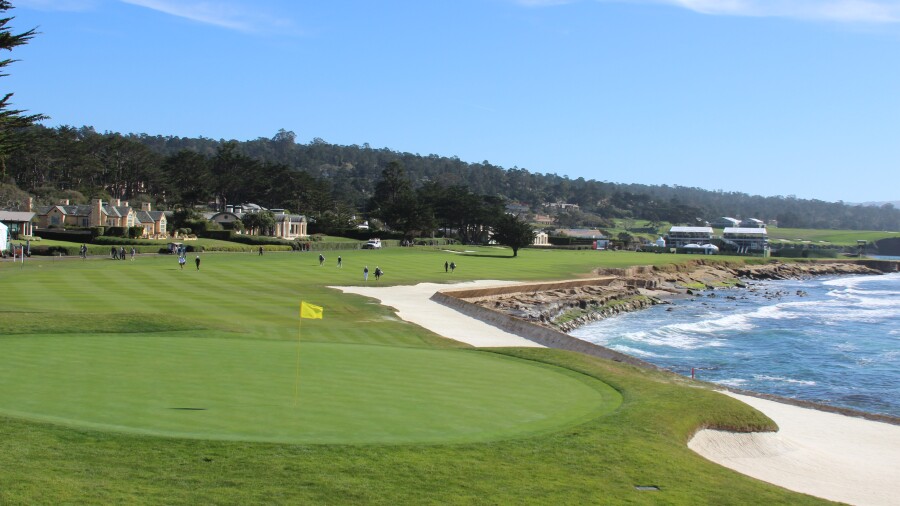
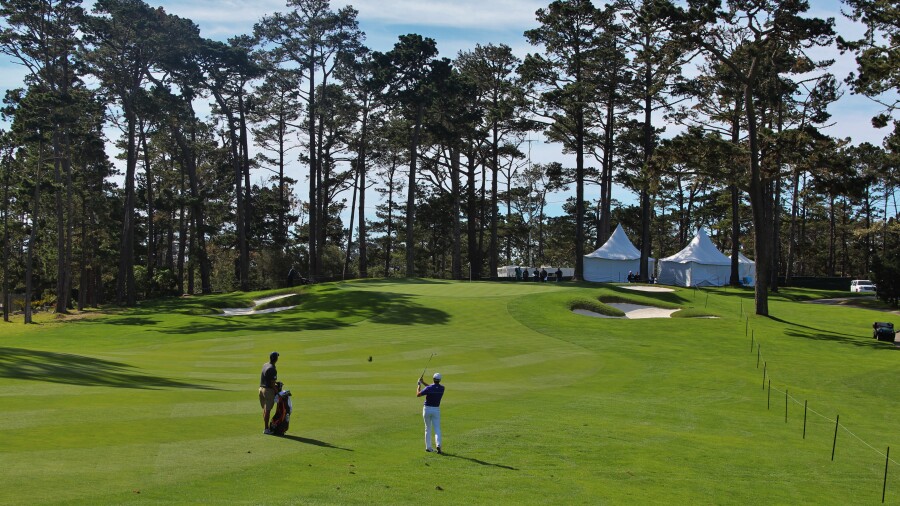


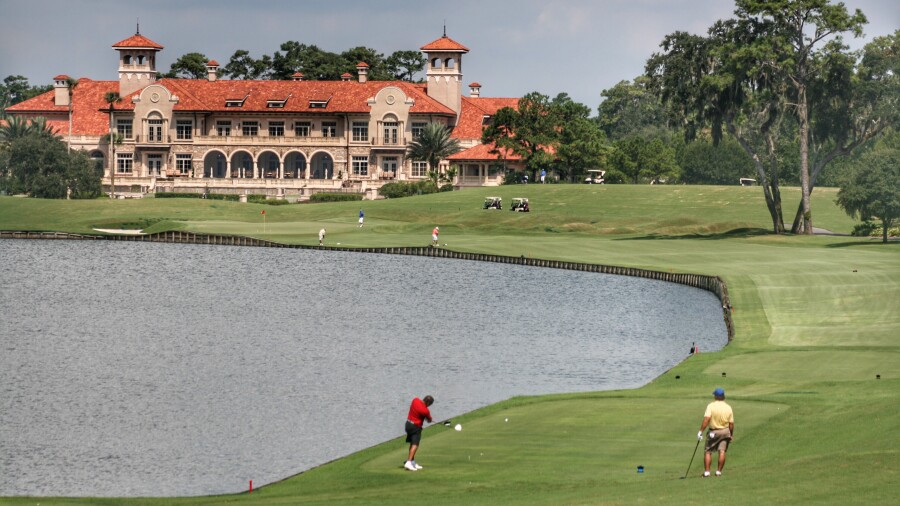




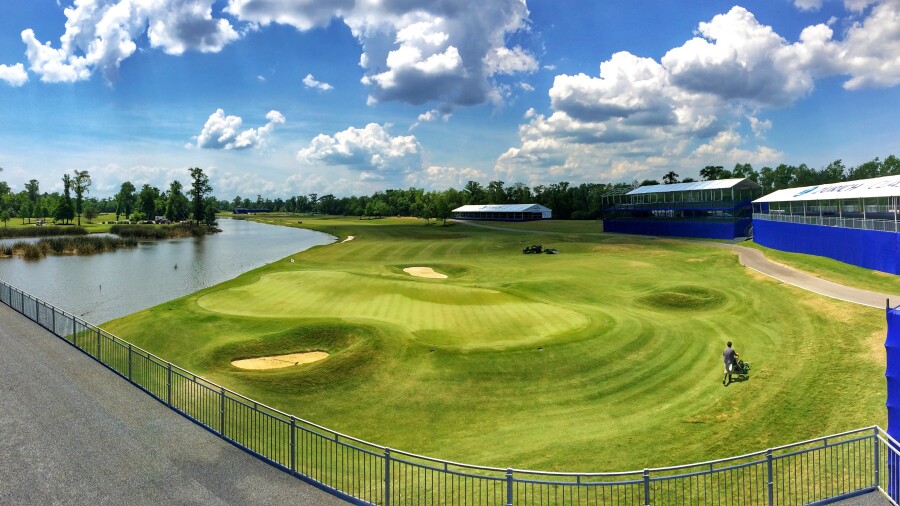





















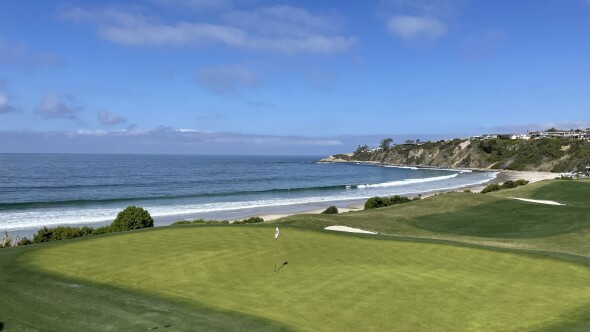






I couldn't agree more with Jason. Let the middle and higher handicappers (the most important customer group) have some fun.
Three good finishing holes I'd like to mention:
1) Tom Doak's 18th at St. Emilion (France) an uphill Par 4 at 369 meters with a tricky but exciting green
2) The 18th at Lazne Kynzvart GC (Czech Republic) - forget the backtees, it's a 200 m carry - a Par 4 at 438 m (white) or 326 m (yellow) over a lake with the majestic castle just behind an inviting green. Choose your box carefully and enjoy
3) The 18th at Habsberg GC (Germany) a 510 meter Par 5, and, as Sir Sean Connery once said in a narrative, all downhill as every finishing hole should be :-).
If I may ad: I like inviting opening holes too. Nothing beats a good start and my favourite is the 1st at Streamsong Blue. You walk from the first green with a smile and all is well.
As an golf course architect, it seems to me that if a 450 yard hole par 4 from the tips is too hard for a finishing hole then maybe you shouldn't be playing from the tips. A middle tee for this hole may only make it 375 yards or so which should be reasonable for an average golfer, and a forward tee may play only 325 yards or so. I think a scratch golfer who is playing a nassau and has pressed wants the last hole to be challenging to settle the bet. The 15-handicapper who might be playing for fun, may want to go out with a par or birdie so that beer will taste even better at the 19th hole. That is where the design comes into play as you are trying make each hole a "one-size-fits-all." Through the use of angles off the tee, location of bunkers and hazards, mounds and slopes in the fairways and roughs, and orientation of the green, an owner/developer who understands the game and is willing to let the architect use a little extra land to accommodate lines of play, a course can be designed to be enjoyable or challenging depending on which tees you choose to play.
It's a modern evolution from the professional men's game to have the card-wrecking 18th. It really wasn't always this way and ought not to be if we're going to consider the game of golf fun..
I am not a fan of Par 5 holes at 1, 9, 10 or 18 as it creates such an imbalance and usually inserts a dreaded delay. I played Pasatiempo as a home course for a time and was also a member of Boston Golf Club each having a Par 3 finisher. That certainly is better and more fun, but first hole gentle handshakes and 18th finishers from Golden Age design where a medal score was not so important are my preferred way to go.
If I must be very specific, without water where a ball is lost, not too short, not too long, not requiring an aerial approach and/or a mandatory long shot in with a medium par/medium bogey sort of manner (A take off on RTJ Sr. and his 'Hard Par Easy Bogey'). Such a hole can be bunkerless, have interesting ground contours and have a green with lots of short grass nearby - but of the nature to make the handicap golfer have some sense of relief and the best players a true sense of doubt.
One of the best short par four finishing holes had to be the 18th at Inverness in Toledo.
I agree 110% with your comments. It can be so discouraging to finish on a bogey or worse on a few of the courses. Having Links at Greystone in my backyard, the 18th can be penal as it always plays into the wind, and you have the added benefit of a gallery watching as you struggle!!
Par 3 18th hole at Niagara Falls Country Club, Home of the Porter Cup
I am an avid golfer and lover of the game. I believe that the golf builders / promoters build the courses for the Professionals and not the common golfer. For the most part, they are too long and narrow and tricky and certainly not built for the enjoyment of most common golfers. The industry would grow if it were to build these courses or amend/adjust these courses to enjoyment of the common golfer who have faithfully and financially supported Golf over the years.
I’ve been fortunate enough to play several of the ones you’ve mentioned here.
Harbour Town will always rank very high for me because I was mesmerized watching that hole on TV for years before I ever got the chance to play it. I can still remember hearing Pat Summerall say on the CBS broadcast, “Calibogue Sound on the left… condominiums on the right.”
I liked the Scottish closers you mentioned: The Old Course and North Berwick are pretty simple holes and were memorable to me more for the theatre of playing back into the town. Conversely, Carnoustie and Kingsbarns are very difficult pars.
In the U.S., Kiawah’s Ocean Course, Whistling Straits’ Straits, Doral’s Blue Monster, the Highland Course at Primland, And the Golden Horseshoe’s Gold, the Ocean Course at Hokuala are all tough pars as well.
Pleasant finishers, in my opinion, are found at Kapalua’s Plantation Course, Chambers Bay, Gamble Sands, Pumpkin Ridge (Ghost Creek) and Sand Valley.
Some lesser-known tracks with tremendous finishing holes that I’ve played are Spring Creek in Zion Crossroads, VA, RTJ Trail @ Silver Lakes (Heartbreaker), and RTJ Trail @ Ross Bridge and Fallen Oak.
The picture at the top of the article, is the 18th hole at Bigwin Island, on Lake of Bays in Ontario, Canada. Why didn't you mention it in the article, or even caption the picture? It is a fantastic Par 5 finishing hole.
Harder and longer is just stupid and puts off most golfers and frightens away those who might otherwise take up the game more.